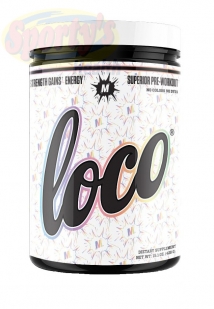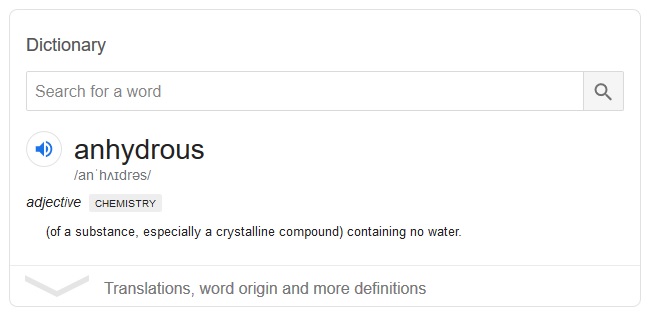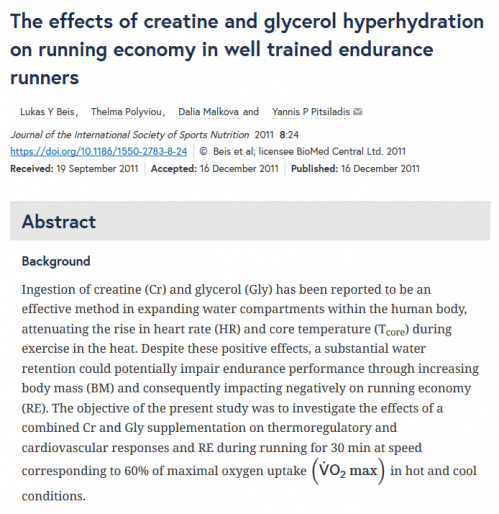Loco Pre-Workout Review (+ Glycerol & Betaine Overview)
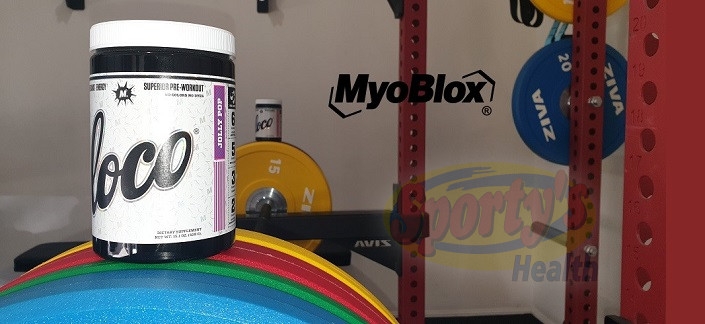
What is it about pre-workouts that makes them so darn enjoyable?
We like to kid ourselves that it’s got nothing to do with the flavour. But let’s face it, when you’re about to put the pedal to the metal, it’s a nice reward.
Some scoff that pre-workouts are all placebo and caffeine. Yet there are literally thousands of published research papers out there examining the effects of common pre-workout ingredients.
But not all of the research is positive. And not all of the studies are well-designed.
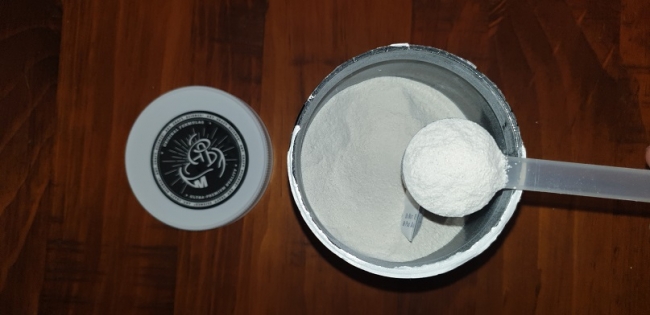
You have to give the pre-workout skeptics some credit. Some companies do unleash cheap products onto the marketplace with insignificant amounts of the active ingredients.
We’ve all seen these before. The front label states “skin-splitting pumps,” with an image of a monstrous bodybuilder with more veins than Frank McGrath.
Then you flip the product over and check out the nutrition panel. And if it’s not a proprietary listing, there’s something like 200mg of Citrulline Malate. A far cry from the 6,000 to 8,000mg dosages backed by clinical research.
But if you’re new to the industry or simply don’t have the time to research active ingredients, sometimes just the presence of an active ingredient that we know has a good reputation could be enough to win us over.
For instance, we all know creatine packs some punch. But if there was 2,000mcg of creatine monohydrate listed on the nutrition panel, at first glance this might look like a decent quantity.
However, this is only 2.0mg or 0.002grams! Realistically, we need around 3-5 grams per serve, which is about 2,000 times more!
But it’s got creatine in it, so it must be good … right?
It pays to do your homework.

Myoblox Loco Pre-Workout is not one of these cheeky, pull the wool over your eyes products. In fact, Loco is part of a new wave of pre-workouts that offer clinical dosages.
These more scientific formulations are crafted by scientists that read a tonne of clinical trials and research. These are the ones crawling hundreds of pages of journal articles, reading through the early hours of the morning with a coffee in one hand and a protein bar in the other.
![]() You’ve got to love ‘em. These days, these science “nerds” are often 6 foot 3 and have traps that remind you of a mountain range. Maybe we’ll just call them intelligent people so as not to offend—gulp.
You’ve got to love ‘em. These days, these science “nerds” are often 6 foot 3 and have traps that remind you of a mountain range. Maybe we’ll just call them intelligent people so as not to offend—gulp.
A formulation based on published research can be the difference between a product that is just tasty caffeine with a cool label and a product that gives you proper nutritional support for training.
Though, technically, caffeine is far from placebo. This natural stimulant found in coffee, tea (Camellia sinensis), cocoa, yerba mate and cola nut has a pretty big impact on our training.
And sometimes all you need is a caffeine hit to get you thinking straight for a training session. Flavoured pre-workouts can also be great for masking a plain (and bitter) amino acid formula that you want to get into the system.
But if you want a pre-workout that delivers more than caffeine and flavour, with a truly potent ergogenic effect, you need to look to products delivered by companies who have done their homework.
And let’s face it, that homework can be tedious, tiring and downright time-consuming work.
This kind of scientific diligence is not in every company’s mission statement!

Sometimes, if you’re lucky, you might find an even higher dosage than is suggested by clinical trials. For instance, Myoblox Loco Pre-Workout contains a whopping 3.0g of Betaine Anhydrous per scoop, compared to the 2.5g typically used in research.
This is certainly not a bad thing at all, as some bodybuilders and powerlifters have a lot of muscle mass. And a higher lean body mass generally requires a greater dosage.
What are the benefits of Betaine?
Betaine is steadily gaining popularity in the sports nutrition industry. It’s been popping up in all sorts of pre-workouts. The benefits of this compound are exciting to say the least.
Betaine is another word for trimethylglycine. It was first discovered in sugar beets in the 19th Century, hence the name Betaine. It is structurally similar to choline, differing only in the amount of methyl groups.
Choline contains 4 methyl groups attached to glycine, while betaine has 3 methyl groups attached to the same amino acid.
Betaine is actually an approved supplement for lowering homocysteine levels. This is due the molecule’s ability to donate methyl groups.
Dosages of around 6 grams per day have been used to lower homocysteine levels. High homocysteine is associated with a greater risk for cardiovascular disease and stroke (1).
Your body actually produces some of its own betaine from choline. And we also consume it through our diet. Two of the richest sources a quinoa and spinach.
So when it comes to body composition, exercise performance and recovery, where does betaine stand?
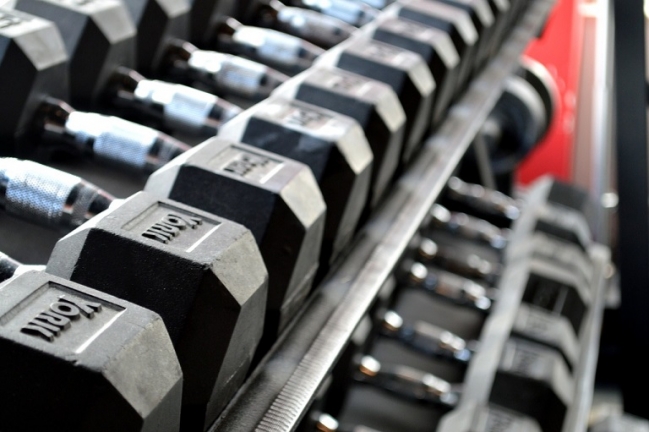
Well, not every betaine study shows the same benefits. Though, given that the clinical trials tend to be small in numbers—which is normal for non-drug based research that is often light on funding—this could come down to individual differences of participants.
Simply put, the smaller the group of people being research, the more likely that individuality will bear an influence on the overall outcome of the clinical trial.
Researchers studied the effects of Betaine over 6 weeks with a dosage of 2.5 grams per day and compared it to placebo. Betaine was shown to boost bench press work capacity, improve power, increase arm size and also led to favourable body composition changes (2).
Another interesting study looked at 2.5 grams supplementation compared to placebo over a 2 week period. They found that supplementation increased Growth Hormone and IGF-1 levels, reduced cortisol levels and increased AKT muscle signaling proteins (3).
On top of this, 1.25g twice daily led to increased vertical jump power and improved squat force. However, the same squat volume was performed in the placebo group (4).
In 2018, researchers finally decided to examine the effects of betaine supplementation on women. They found that fat mass was reduced in the betaine supplementation group. However, strength was not influenced. More research in women is certainly warranted to assess the ergogenic effects of betaine (5).
To Summarise, betaine has demonstrated the following effects:
- Increase Bench Press Work Capacity
- Improve Squat Force
- Boost Vertical Jump Power
- Increase Arm Size
- Enhance Body Composition
- Increase Growth Hormone Levels
- Boost IGF-1 Levels
- Reduce Cortisol Levels
- Increase AKT Muscle Signalling Protein
These are some impressive results from one single nutrient. The beauty of it is, that each scoop of Myoblox Loco Pre-Workout contains 3,000mg of betaine anhydrous.
What does Anhydrous mean?
Quite often, food technology and manufacturing terms find their way onto product labels, when really they have no business being there.
For instance, dry weight basis levels are often used for the protein quantity on nutrition labels.
And then there’s anhydrous ...
Anhydrous simply means that the powder does not contain water. Often, you can see caffeine anhydrous or betaine anhydrous being declared.
What’s the significance of anhydrous? Well, nothing really. Though it does sound pretty cool and adds a certain level of intrigue to the ingredient. Perhaps this helps boost the overall appeal of the finished product.
Realistically, betaine anhydrous is the same as betaine.
Myoblox Pre-Workout Caffeine Content
Each scoop of Myoblox Loco Pre-Workout contains 200mg of naturally occurring caffeine extracted from Green Coffee Bean, which is equivalent to approximately 2 cups of coffee.
Hold Your Pumps with Glycerol
Glycerol is a fascinating molecule. It’s actually the backbone of fats. For instance, a triglyceride (a type of fat) is made up of three (tri) fatty acids which are held together by glycerol (glyceride).
Glycerol is actually classified as a carbohydrate, which some might see as odd given the fact that it is found in fats and oils! Glycerol contains about 4 calories (16.7kJ) per gram.
Research has indicated that muscle is primed to take up glycerol during exercise. So getting your dose before or towards the first half of your session is simply perfect (6).
But the question remains … does it do anything?
Apart from the fact the glycerol is converted to energy (ATP) in the liver by a pathway called gluconeogenesis, glycerol is a powerful hyperhydration agent.
Glycerol increases water volume in the body and expands body spaces, like muscle (7). There’s one other sports nutrition nutrient that also does this quite well: creatine.
In fact, Glycerol and Creatine have been studied in combination in endurance athletes for this reason. Because they both boost hydration it was hypothesized that when exercising in heat, these nutrients may help to reduce core temperature and heart rate by preventing deyhdration.
However, there were concerns that the increase in bodyweight from all that extra water may reduce the economy of the runners. The results of the clinical trial showed that Glycerol and Creatine reduced cardiovascular strain and heat-related stress without negatively impacting the runner’s economy.
So, endurance athletes can use glycerol to keep hydrated, while it doubles as an alternate fuel source, and bodybuilders can use it to maximize the muscle pump effect through hyperhydration.
If you’re into weight training or calisthenics, Glycerol will help you hold your pumps for longer once you’ve finished your training. Especially if you take a little bit at the end of your session.
However, pre-competition bodybuilders will need to take into consideration the effect that glycerol will have on their overall fluid level.
There is very little research assessing the effects of glycerol on markers of performance. Though one study indicated that it was able to improve both aerobic and anaerobic performance (8).
What Else is in Loco Pre-Workout?
Beta-Alanine
Beta-Alanine has been covered a thousand times or more over countless blog articles. To be brief, it boosts muscle Carnosine levels and buffers lactic acid in muscle tissue (9,10).
So you really have to generate lactic acid during exercise to benefit from beta-alanine supplementation. Research shows that a bouts of exercise lasting 2 to 8 minutes may benefit from supplementation. Typical dosages are 4-6 grams per day.
Yes, Loco is a little low on beta-alanine, at 2.5g per scoop. Though double-scoopers will certainly get enough to be therapeutic. However, traditional bodybuilders—sets typically lasting well under 1 minute—may not find this nutrient to be especially beneficial.
Taurine
Benefits associated with this nutrient are:
- 10% increased time to exhaustion (cyclists)
- Decreased Blood Lactic Acid
- Reduced Core Temperature (and increased sweating)(11)
- Reduced Exercise Induced Muscle Damage with Improved Recovery
- Increase Peak Torque(12)
- Antioxidant (13)
- Regulates Blood Pressure and Heart Contractile Function (14)
Dosages are often in the range of 50-100mg/kg/day calculated from total body weight. For a 100kg person, this equates to 5-10 grams of taurine per day. With Loco containing 1.5grams of Taurine per scoop, it is a little low on this amino acid. If you want the full benefits of this amino acid, you may want to top up a little.
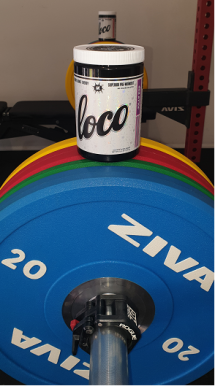
Other Ingredients
Many of the other ingredients are tied up in a proprietary blend. And let’s face it, in the competitive world of sports nutrition supplementation, you can’t blame Myoblox for wanting to protect some of their formulation, can you?
After all, Myoblox have shown good ingredient transparency with many of the main nutrients in this formula.
For those of you who aren’t familiar with proprietary blends, they are simply a quantity on a nutrition panel that is given for multiple nutrients. In this manner, we can’t be sure exactly how much of each individual ingredient is in the product, though it does give us a ball-park idea.
Synephrine
This product contains Synephrine, derived from Citrus aurantium. Synephrine is an alkaloid with a similar chemical structure to ephedrine which was banned in 2004.
Despite this, synephrine is not reported to have adverse cardiovascular effects or have any significant stimulant effects in humans. There is little supportive evidence for this nutrient, though it is often included in sports nutrition products to benefit weight loss and appetite control, exercise performance, energy and focus (15).
Acetyl L-Tyrosine
Acetyl L-Tyrosine is an acetyl group attached to L-Tyrosine, the conditionally essential amino acid. Tyrosine is made in the body from Phenylalanine.
Tyrosine, acetylated or not, passes through the blood brain barrier and is a basic starter molecule for the synthesis of Dopamine, Adrenaline and Noradrenaline.
Given this, tyrosine may have a nootropic effect, assisting with mood and focus.
Higenamine
Higenamine is a Beta-2 Agonist that allows more oxygen to enter the lungs. This assists with tissue oxygenation and performance. This ingredient was recently banned by the World Anti-Doping Agency. Competitive athletes beware!
In addition, Loco Pre-Workout contains a range of B Vitamins which may assist with ATP production and energy, and Piperine Alkaloids from Black Pepper. Piperine is believed to improve the absorption and utilization of a range of nutrients.
Halostachine (N-methylphenylethanolamine) is an alkaloid structurally similar to N-Phenethyl Dimethylamine, which are both contained in Myoblox Loco.
N-Phenethyl Dimethylamine may enhance levels of dopamine, serotonin and noradrenaline in the brain, thus enhancing mood and focus (16). However, there is little research on this compound at this stage.
Loco Pre-Workout Flavours
Loco Pre-Workout comes in Candy Bomb and Jolly Pop flavours. And there’s absolutely nothing to be afraid of when it comes to your first sip!

Both flavours are supremely awesome. They’re different enough to be enjoyable without being weird, and are welcome relief to palates that are fed up with the standard watermelon, blue lemonade and fruit punch flavours—yawn.
The flavour creations of Loco Pre-Workout are strong too. In fact, they’re strong enough that a half scoop will mask plain unflavoured EAAs or BCAAs quite easily, should you need to some assistance in this area.
Apart from this, they’re refreshing and enjoyable to drink. And there is not even a hint of black pepper, which many piperine or bioperine containing products fall victim to.
Conclusion
Few pre-workouts hold up as well as Myoblox Loco when it comes to quality.
This product not only tastes great with excellent mixability, but delivers a clinical dose of betaine, along with fair dosages of other ergogenic nutrients.
Its stimulant, mood enhancing and nootropic effects are second to none. In fact, this is a product you have to try to really understand.
Expect Loco Pre-Workout to deliver on energy, motivation to train, enhanced performance for a broad range of exercises, improved recovery, some thermal protection and muscle volumisation effects.
Just think, you can train in the evening then hit the town at night with your guns still bulging. Such is the specialness of glycerol.
If that’s not your cup of tea, then you still get to experience a superior muscle pump, which everyone seems to enjoy. Heck, a chamomile tea and a good book is more enjoyable with a nice pump.
No matter what your goals, if you’re after a pre-workout from a product development team that have gone the extra mile, this is your product.
References



